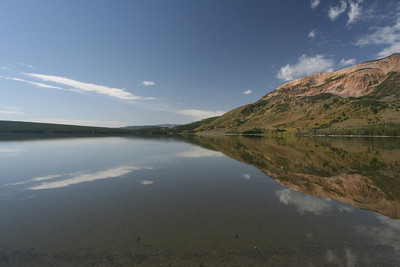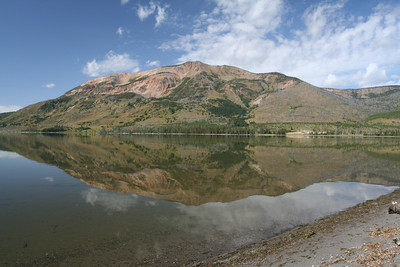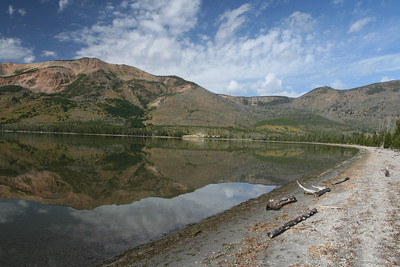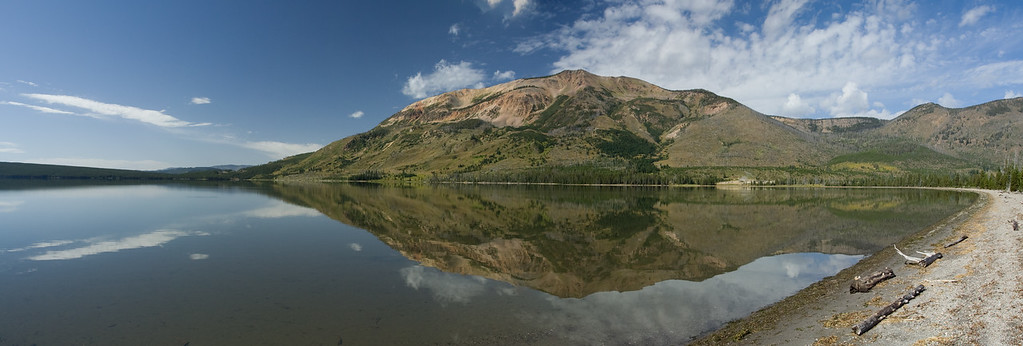blaze inspired me (with his recent thread) to try a panorama. I used the photomerge feature in PSE7 to stitch three photos together. These photos are taken at Heart Lake in the southern section of Yellowstone National Park. We did a two day backpack and our campsite was right on the lake. Mt Sheridan is a beautiful mountian.
I often use a polarizing filter on my lens, but for these shots I intentionally rotated the filter to its minimum effect, in order to maximize the water reflection. One thing I didn't expect, and still don't understand, is that it had the effect of turning the sky's reflection in the water to (almost) black and white.
Anyway, here are the three original unedited JPEGs and the final product made from the RAW files. Editing of the RAW and pano files included white balance, contrast, sharpening, straightening, and cropping.




I often use a polarizing filter on my lens, but for these shots I intentionally rotated the filter to its minimum effect, in order to maximize the water reflection. One thing I didn't expect, and still don't understand, is that it had the effect of turning the sky's reflection in the water to (almost) black and white.
Anyway, here are the three original unedited JPEGs and the final product made from the RAW files. Editing of the RAW and pano files included white balance, contrast, sharpening, straightening, and cropping.




